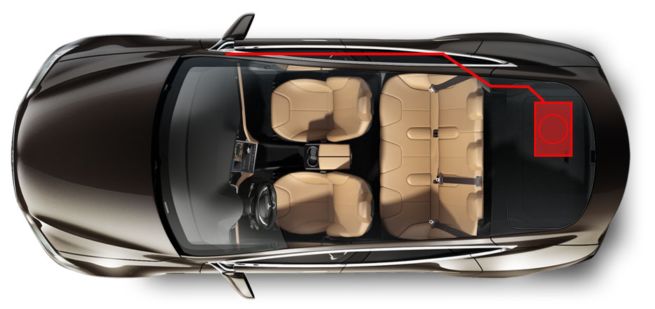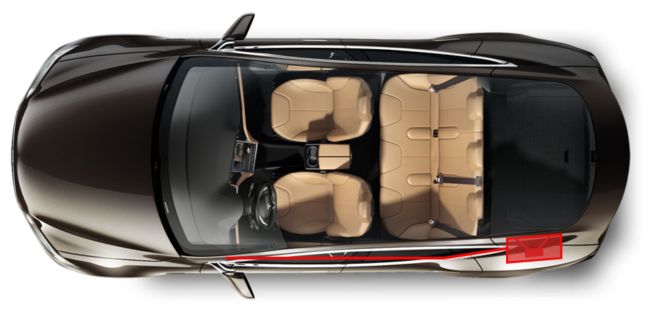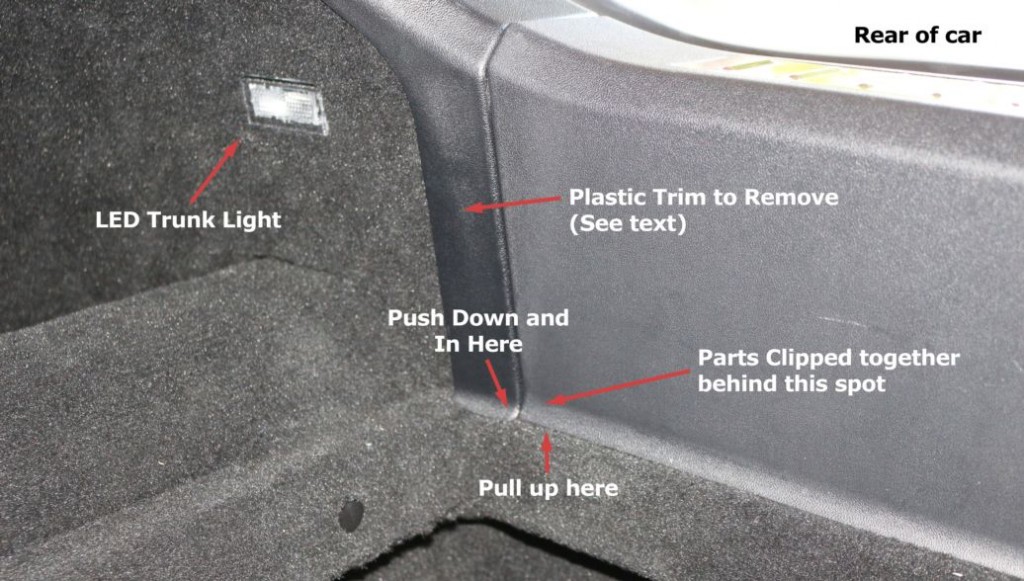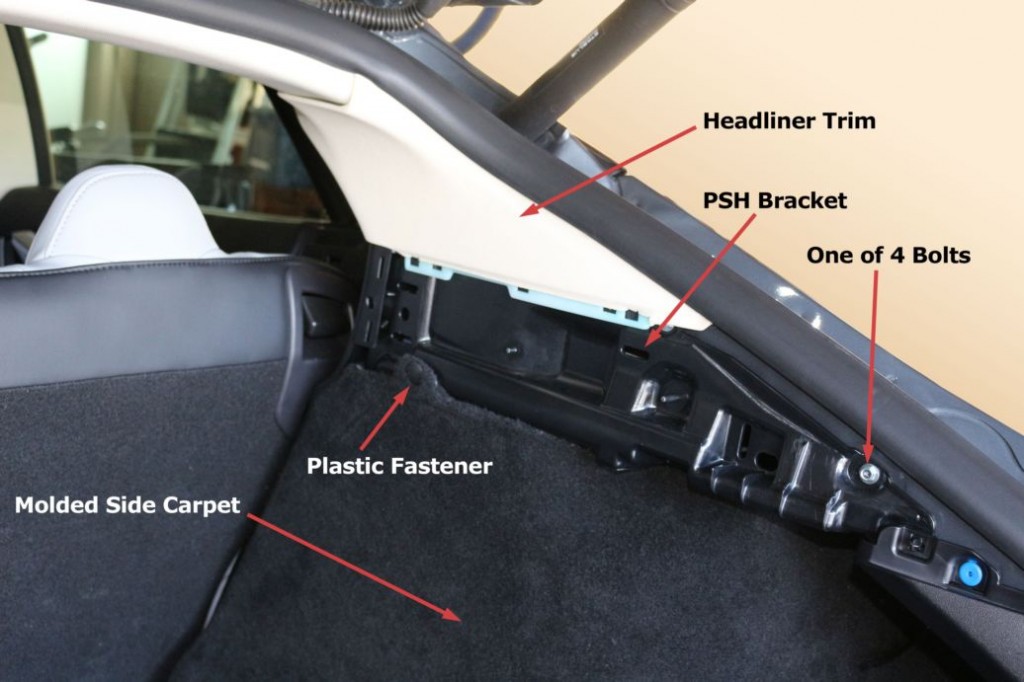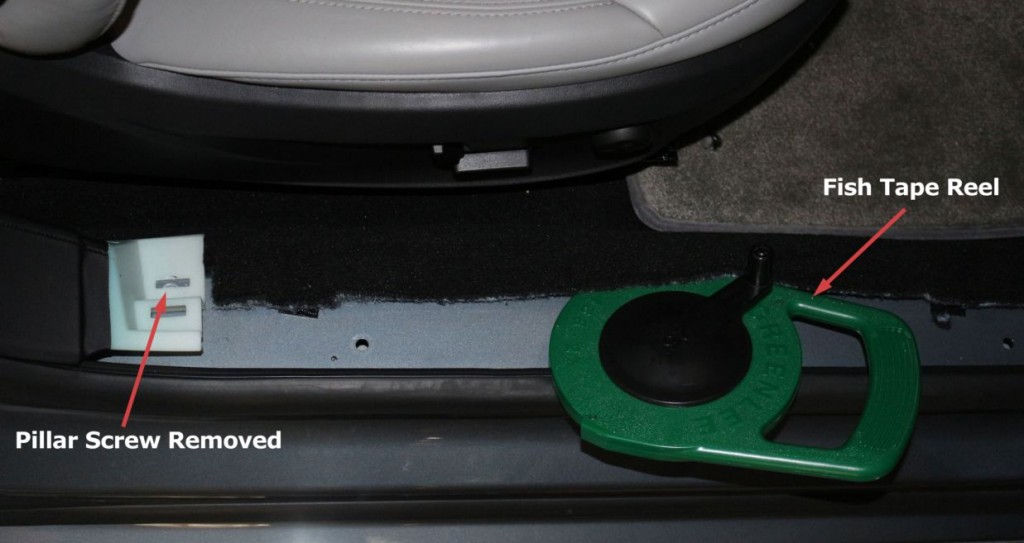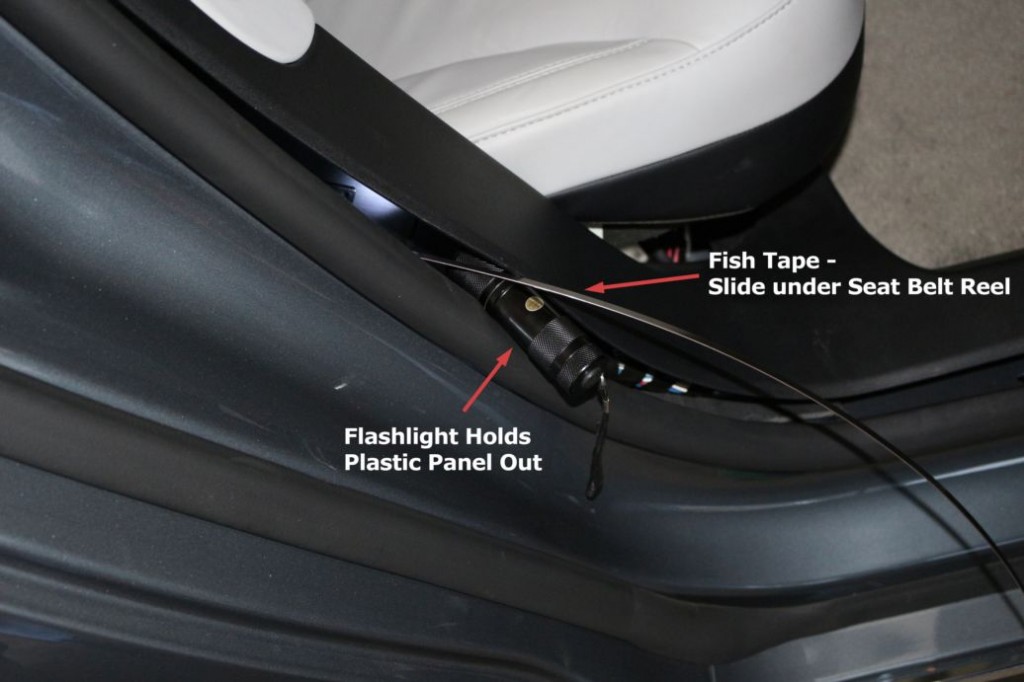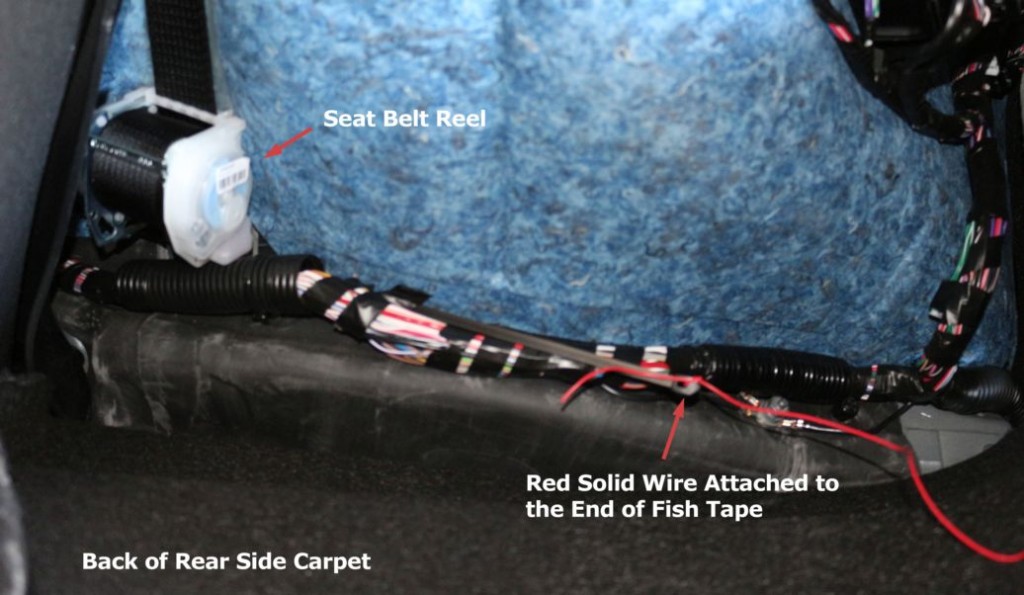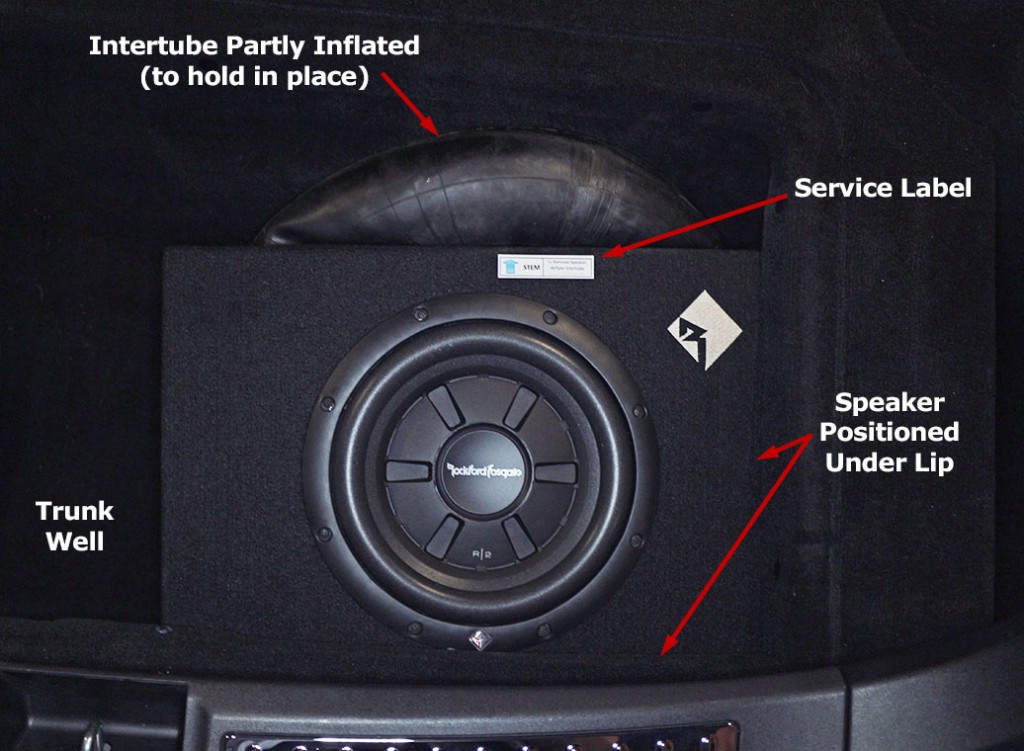In this section, we’ll run the speaker wire from the front dash area to the rear trunk area. While this took me about 3 hours, with these instructions, you should complete this in less than 90 minutes. I’ll show running the wire along the passenger side, which is best if you install the amplifier in the frunk. If you install the amp inside the dash on the driver’s side or are using a sub that mounts on the driver’s side, such as the NVX BE-TSLAS, then run the wire on the driver’s side. The side you run it on is not all that important, as it is easy to run the wire from one side to the other in the dash.
For the 200 W speaker selected, I used a 16 gauge speaker wire. The wire included in the NVX install kit is rather nice as it uses thick rubbery PVC insulation that is easy to thread and should avoid any vibration-related rattles.
- In the trunk, remove the parcel shelf, any extra carpet or rubber mats, the trunk cover, and any objects stored in the trunk or side pockets.
- Remove the plastic parcel shelf holder. There is one T-25 screw that is first removed from the bottom. Once the screw is removed, pull towards the driver’s side of the car to release the snaps.
- Between the parcel shelf holder bracket (PSH bracket) and the trunk ledge is a plastic trim. Remove by pulling the snaps near the PSH bracket. There is a catch between the bottom of this panel and the trunk ledge trim. You need to pull up on the ledge trim while pushing down on the side trim about ¼” to release this hook. Once released the side panel can be removed.
- Remove the white headliner trim that is covering part of the PSH bracket. It is only held in with a couple of snaps. Keep your hands clean to avoid soiling the headliner trim part. Pull towards the driver’s side of the car to release.
- Our objective is to partly pull out the side part of the black molding covered by carpet partly out so we can run the speaker wires.
- If equipped with the side trunk LED, snap it out of the carpet molding and disconnect the light. There is a tiny latch that must be depressed before the connector will slide out from the LED assembly. Poke the wires back through the hole so it doesn’t hang up when later pulling the carpet molding partly out.
- The carpet is held to the PSH bracket with one black plastic flat-head fastener. Remove it.
- Unbolt the PSH bracket. There are 3 visible bolts, and one hidden. You have to pull out the carpet 5-8” near where the black fastener was to get at the last bolt. We don’t need to remove the PSH bracket; it only has to move up ½” or so.
- Now pull out the side carpet out about 12-15” at the top. Like the bracket, it’s not necessary to pull the side part entirely out and it will make it far easier to reassemble later. The bottom of the carpet will remain attached, but you can easily reach in and see the main wiring harness, where we plan to run the speaker wire.
- Remove the front passenger side sill panel. Lift up from the back of the panel until the bottom snaps release and twist the panel out.
- On the rear passenger sill panel, lift up from the panel towards the front of the car first. This part is also difficult to get out and we can do our work with the part only partly loose. There may be a hidden bolt that holds this in at the top, but we didn’t investigate how to fully remove it.
- Now that half the car is disassembled, we need to thread the wire. Under the sill area, you’ll notice a major wire bundle that runs along the side of the car under the back carpet (you will need to peel back the carpet slightly to see this. You will also notice the “B” pillar cover has two T-25 screws holding it in place. Remove these two screws. While we don’t remove the B pillar cover, it gives a slight bit of additional room for running the wires.
- Starting from the front passenger sill, feed the fish tape to the rear passenger sill. With the estimated length of tape positioned so it will reach the rear, switch to the rear sill and locate and pull up the fish tape end. This is a bit tricky and you may need several tries to make this work. It goes quicker if you have two people!
- With the end of the fish tape, attach the 8 ft of solid wire. At the front sill, pull the fish tape back with the solid wire. With the wire threaded through this tricky area, remove it from the fish tape. Splice both speaker cable wires onto the solid wire and solder the temporary connection. Wrap the connection with electrical tape to make it pull through easier (and not catch on something).
- Back at the rear sill; pull the solid wire until you get the speaker wire through this area. Pull enough wire so you can reach the back trunk area plus an extra 4 ft as a safety margin.
Pry up the side sill panel as shown. I stuck a small flashlight to hold it open and help make it easier to see the area. From the rear passenger door side, run the fish tape under the seat belt reel and rear trunk area.
- Connect the unused loose solid wire to the fish tape.
- Pull the tape back out and the solid wire should thread through this area. Attach the wire to the speaker wire that was pulled earlier under the rear sill panel.
- Now thread the remaining speaker cable along the large wire bundle near the trunk floor. As you get near the back of the car, thread the cable under the bottom of the carpet panel where later we’ll connect it to the speaker.
- I added a couple of tie wraps to hold the speaker wire alongside the main wire bundle in the trunk and to ensure it doesn’t get caught in the seat belt reel.
- In the front sill, I routed the wire along the wire bundle and up to the dashboard area.
- Now all the panels and bolts can be re-attached in the reverse order, except leave the front sill off. As a reminder, there are two T-25 screws for the B pillar cover, four bolts for the PSH bracket, and one for the parcel shelf holder.
- Once the trim parts are in place, lightly pull the rubber seal so it is properly overlapping each plastic part.
- Leave an extra 3 feet of wire to where it connects with the speaker and cut off any excess including the solid wire. I stripped the two conductors and wicked solder to each one (optional). Connect the wires to the speaker. The gray/black conductor goes to the minus terminal, and the blue conductor goes to the positive terminal.
- The speaker is quite heavy and will shift around while braking or hitting bumps if not secured. I was unwilling to drill holes and mount them in a conventional way. I made templates for the uneven floor and was planning to make closed-cell foam brackets, but a friend suggested inflating a bag under the speaker. This turned out to be a great solution. Position the speaker under the rear and side lips. I used a new 18×8.5/950 inter tube placed under the bottom and back. Position the stem to the back, and top. Partly inflate the tube to push securely against the lip. I only needed about 8 psi to do the job, but be careful not to over-inflate. It is now quite secure and locked into place. While not beautiful, it saves a huge amount of work. If you don’t like the look, a small cover could be made over the back to hide the intertube. Since this is not visible unless you open the well, I didn’t see the need for an extra cover.
- Optional – Add a service label to help Tesla in the event service needs to remove the speaker.
Continued in Part 2: Running Wires Through the Firewall…
Return to Sub-woofer and Amplifier Installation Introduction
